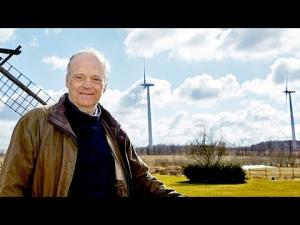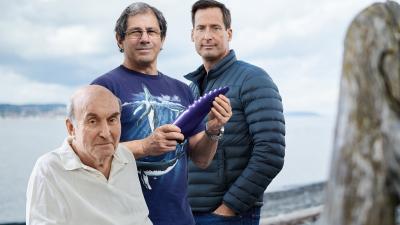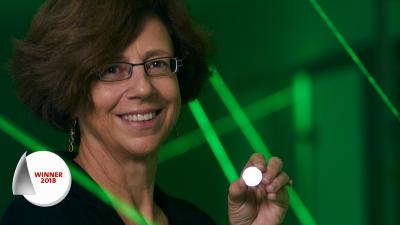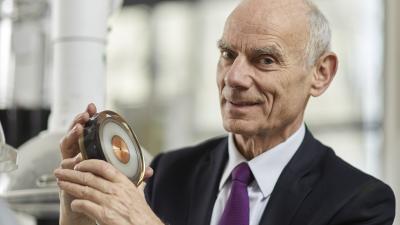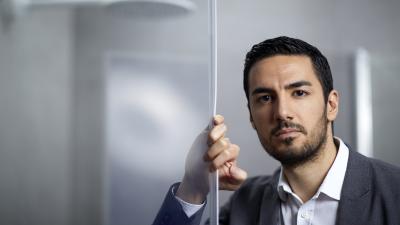Henrik Stiesdal
Offshore wind farms
Finalist for the European Inventor Award 2018
Henrik Stiesdal has played a key role in creating the modern wind energy industry since the 1970s by contributing key innovations that have pushed the industry forward. He has significantly increased the status of wind energy as a major renewable energy source. In addition, he has helped create thousands of jobs.
The modern wind power industry received a major boost in 1979 when Stiesdal created a three-blade, upwind-rotor wind turbine. It was so ground-breaking that it earned the name the "Danish Concept" and led the industry as the benchmark for more than a decade.
Some 20 years later, after seeing the problem manufacturers were having with multi-part turbine blades, the Danish inventor followed the "Danish Concept" with the patented, one-piece IntegralBlade.
And in the mid-2010s, Stiesdal recognised that the offshore wind industry required an inexpensive, practical and highly usable model. He predicts that his concept, TetraSpar, will radically cut wind energy production costs.
Societal benefit
Wind energy contributes to the replacement of carbon-emitting methods of creating energy. The European Union's Renewable Energy Directive sets a target of 20% final energy consumption from renewable sources by 2020. This transition to greener energy has been accompanied by innovations in wind energy, many of them by Stiesdal, a long-time believer in wind power.
In 2017, Stiesdal's home country, Denmark, met over 43% of its power needs through wind power, and offshore wind provided around 15% of the country's total electricity. Offshore wind power currently meets about 1.5% of Europe's electricity requirements, but it is playing an increasingly important role in the total wind power mix that covered an estimated 11.6% of European Union electricity consumption in 2017.
Economic benefit
Stiesdal was made a technical manager at Bonus Energy in 1988, rising to become Chief Technology Officer in 2000. By the time of the company's sale to Siemens Wind Power in 2004, its turnover had increased from EUR 10 million to EUR 336 million at a compound annual growth rate (CAGR) of around 23% over 15 years.
As Chief Technology Officer of Siemens Wind Power between 2004 and 2014, Stiesdal was part of the executive team that saw the division's annual sales grow from EUR 350 million to EUR 5.5 billion. A 2017 report by Windpower Monthly rates the company as the world's second largest wind turbine supplier. A year after his 2014 retirement from Siemens, the inventor created his own company, Stiesdal A/S.
Experts at MarketsandMarkets valued the global wind energy market at EUR 19.5 billion in 2016 and project a CAGR of 15 to 32% in the period until 2022. In 2017, European offshore wind farms generated enough power to cover the needs of around 14.5 million households according to wind power advocacy group WindEurope.
How it works
Named the "Danish Concept", Stiesdal's patented, three-blade rotor replaced the previously preferred two-blade version. Placing the rotor in front of the turbine tower and adding an automatic system for changing rotor speed (slower in low winds and quicker in high winds) was a reliable principle that led the field for a decade and a half.
The inventor's IntegralBlade is made by injecting fibreglass-reinforced epoxy resin into a mould under a vacuum. These blades are the world's largest fibreglass components, measuring up to 75 metres in length and sweeping an area of 18 600 m2, almost the size of two and a half football pitches.
Stiesdal's most recent innovation is TetraSpar, an industrialised offshore-wind-turbine platform that can be towed out to sea with the turbine already mounted. Based on a simple, tetrahedral structure that combines the advantages of existing floating and fixed mooring designs, it can be installed in a greater range of water depths (>10 m to 1 000+ m). Additionally, the inventor expects it to slash wind energy production costs by up to 75% compared with other concepts.
The inventor
Stiesdal has long been fascinated by the power of wind, and he recalls visiting the coast as a child with his father during major storms. Such early memories played a part in his creation of an efficient wind turbine for his family farm in the 1970s, and they have informed his academic direction and his work in the wind industry ever since.
Stiesdal created his first commercial turbine in 1979 and over the years has provided his expertise to major companies in the wind power industry. Milestones include a position as an R&D project manager at Vestas, now the world's largest wind turbine supplier, and key positions at Bonus Energy before he founded his own company in 2015.
Today, Stiesdal holds professorships at the Technical University of Denmark and the University of Maine. He is the author of 94 granted patents for concepts in wind turbine and battery design; his honours include the German Renewables Award (2014) and the Danish Wind Turbine Award (2015).
He continues to enjoy research in the field, with tests of his TetraSpar concept scheduled for Norway later in 2018, and he is further refining his existing thermal battery design. If successful, he says, it will create a grid-scale energy storage concept that can provide backup to renewables for much longer than normal batteries, lasting for days and weeks.
Did you know?
Wind may be invisible and unpredictable, but science is catching up. In order to make it easier to assess specific sites as potential wind turbine locations, the Technical University of Denmark is working on a project entitled New European Wind Atlas (NEWA). The aim is to provide a Europe-wide key performance indicator that reduces the uncertainties when planning locations for wind energy generation.
Based on highly accurate and verified data, an "uncertainty map" will provide the wind power industry with expertise about in-situ conditions before a decision is made on the potential development of a wind farm.
The project will provide wind farm developers with state-of-the-art modelling, methodologies and other information to determine wind conditions with very low uncertainty. As a result, NEWA aims to reduce the cost of wind-farm-generated electricity.
Media gallery
Contact
European Inventor Award and Young Inventors Prize queries:
european-inventor@epo.org Subscribe to the European Inventor Award newsletterMedia-related queries:
Contact our Press team#InventorAward #YoungInventors






